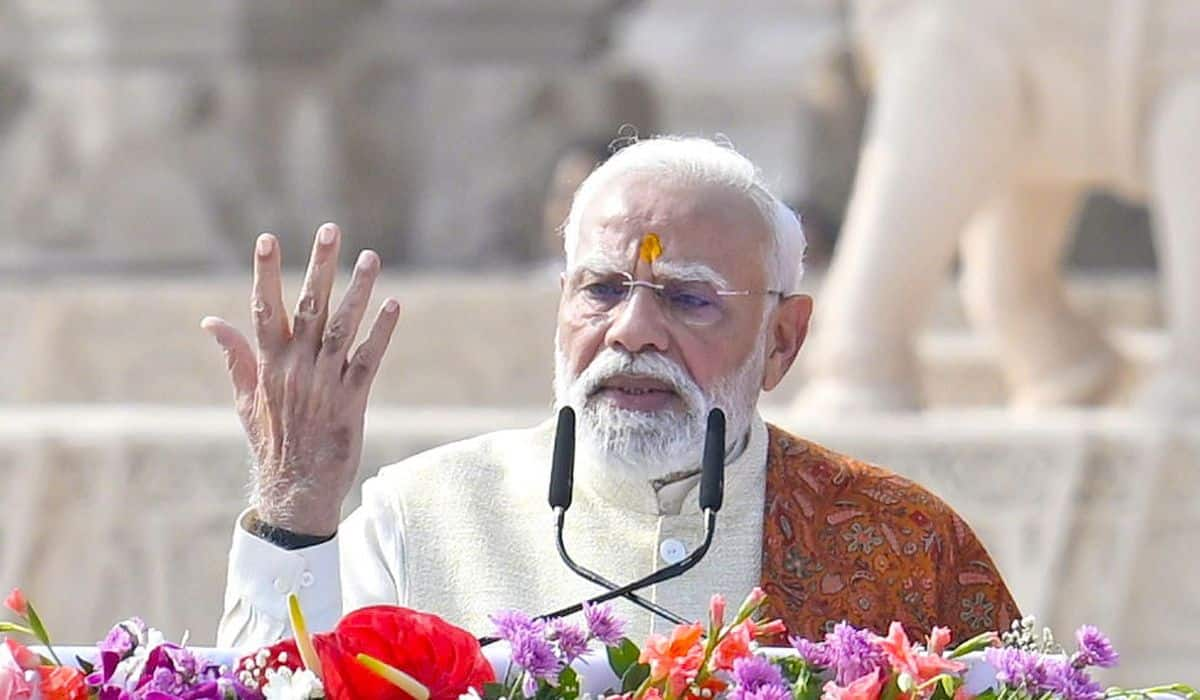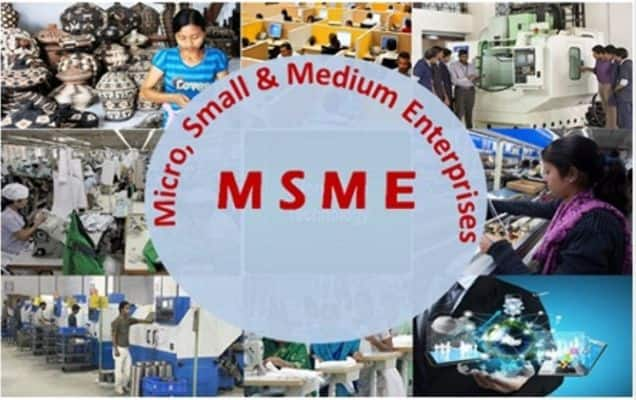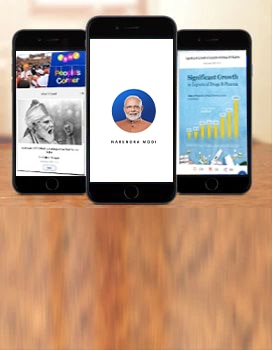Chief Minister of Gujarat Shri Vijay Rupani ji,
My Colleague Union Minister Dr. Harshvardhan ji,
Her Excellency Ms. Anna Ekstrom, Minister from Sweden,
Deputy Chief Minister Shri Nitinbhai Patel ji,
Distinguished Nobel Laureates,
Dr. Goran Hansson, Vice-President of the Nobel Foundation,
Dear scientists,
Ladies and gentlemen!
Good evening!
Let me first congratulate the Department of Biotechnology, Government of India, the Government of Gujarat and the Nobel Media, who have brought this exhibition to Science City for five weeks.
I declare the exhibition open and hope you will all have an opportunity to experience it.

The Nobel Prize is the world’s recognition at the highest level for creative ideas, thought and work on fundamental science.
Earlier, there have been occasions when one, two or three Nobel Laureates have visited India and had interactions with students and scientists in a limited manner.
But, today, we are making history by having a galaxy of Nobel Laureates in Gujarat.
I extend a hearty welcome to all the Laureates present here. You are valued friends of India. Some of you have been here earlier several times. One of you was born here and actually grew up in Vadodara!
I am delighted to see so many of our young students here today. I ask all of you to urge all your friends and family to visit the Science City over the coming weeks.
Our students will cherish this extraordinary experience of interacting with you. It will inspire them to undertake new and significant challenges that hold the key to our shared sustainable future.
I am very hopeful that this exhibition and this Series will become a strong link between you and our students, science-teachers and our scientists.
My Government has a clear vision of where we want India to be in the next 15 years. Science and Technology is the pivot on which that vision will translate into strategy and action.
Our vision in Science and Technology Is to make sure that opportunity is available to all our youth. That training and future preparedness should make our youth employable in the best places. That India should be a great science destination. That we should take major inspirational challenges such as deep sea exploration and Cyber Systems.

We have a plan that will take this vision through action.
Our scientists have been asked to develop programmes on science teaching in our schools across the country. This will also involve training teachers.
At the next level they have been asked to create new programmes both in skilling and high-tech training.
These programmes will make you employable in the new knowledge economy and make you effective entrepreneurs and thinking scientists. You will be able to compete for positions and jobs here and anywhere in the world.
Next, our scientists will link our laboratories in cities. You can share ideas, seminars and resources and equipment. This will allow us to do more and better collaborative science.
Our science agencies will expand science-driven entrepreneurship and commercialisation in a big way in each state according to local needs. Your start-ups and industry can then compete globally.
These seeds must be planted this year and we will then see fruits come steadily.
My young friends, you are the future of India and the world. India offers an enabling and unique opportunity of a large demographic dividend and the best teachers.
Young students, you are the streams that charge the wells of knowledge and expertise. Your training and your future is what this is all about.
Thanks to science and technology, the human race has flourished. Large numbers are enjoying a quality of life unparalleled in human history.
Yet India has a great challenge to raise many from poverty. You will be scientists soon and must not neglect this challenge.
The maturity of our science will also be judged by a responsible treatment of our planet by the wise use of Science and Technology.
You will be scientists soon and the guardians of the planet.
We must have clear outcomes from the Nobel Exhibition and the Science City.
Globally, science & technology has emerged as one of the major drivers of socio-economic development. In the fast growing Indian economy, there are increasing expectations for scientific interventions.

There are three outcomes I would like to see from the Nobel Prize series.
First, follow up with students and their teachers. The students and teachers here have come through a national ‘Ideathon’ competition and hail from all over the country. Do not lose track of them.
During the exhibition period, you may also have sessions for school teachers from all over Gujarat.
Second, stimulate entrepreneurship locally. There is a great entrepreneurial zeal amongst our youth.
Our science ministries have incubators here in Gujarat. In the next five weeks, you should have a workshop on how cutting edge science and technology-driven start-ups can be boosted.
I am told that there are about ten Nobel Prize winning discoveries that have gone into the making of a smart phone.
Prize winning Physics can both save electricity bills and the planet. The 2014 Nobel Prize in Physics was for the BLUE LED. This came from basic research by three Japanese scientists Akasaki, Amano and Nakamura. When combined with the previously known RED and GREEN LED, white light devices can be made that last a hundred thousand hours.
There are many such exciting discoveries being made that we can apply through enterprise.
Third, impact on society
Many Nobel Prize winning discoveries have had a huge impact on our society through health and agriculture.
For example, precision medicine using the tools of gene-technologies is now a reality.
We must use this tool to study cancer, diabetes and infectious diseases.
India is already a generics and bio-similar leader, with a major hub in Gujarat, but we must now strive to become a leader in new bio-tech discoveries as well.
I am happy that this Exhibition has been planned at the Science City which connects community to science.
It is an ideal platform to engage citizens to learn about solutions to global challenges we face.
We will strive to make this Science City a truly attractive, world-class place for young students and science teachers from all over the country and the world to come and be inspired by the exhibits. Centre and State should collaborate and take up this challenge this year.
My young friends!
The Laureates represent the peaks of science and you must learn from them. But remember that the peak rises from great mountain ranges and does not stand alone.
You are the foundation and the future of India. You should build new ranges from which the peaks will arise. If we focus on the foundation, in our schools and colleges and through teachers all miracles can happen. There will be hundreds of peaks from India. But, if we neglect the hard work at the base no peak will magically appear.
Be inspired and be daring, have courage and be your own person and not imitative. That is how our honoured guests succeeded and that is what you should learn from them.
I take this opportunity to thank the Nobel Media Foundation, the Department of Biotechnology, Government of India and the Government of Gujarat for organising such an innovative programme.
I wish this exhibition a grand success and I am sure that you will all benefit from it.
Opportunities in science for the youth, India as a hub for research and innovation. pic.twitter.com/nT9bB6aXVj
— PMO India (@PMOIndia) January 9, 2017
The Prime Minister speaks at Science City in Ahmedabad. pic.twitter.com/qjGrhSdZqU
— PMO India (@PMOIndia) January 9, 2017
Science driven enterprise and catering to local needs and aspirations through science. pic.twitter.com/HULKnJ5eRn
— PMO India (@PMOIndia) January 9, 2017
Science for the betterment of humanity. pic.twitter.com/beOVOLPSca
— PMO India (@PMOIndia) January 9, 2017














